It took me too long to learn how to make a good stock. My initial attempts at making stocks were disastrous - they were bland, overloaded with soy sauce and dried shiitake mushrooms, and ultimately destroyed by impatience. In fairness, I had no idea what I was doing; I didn’t care to take a few minutes to read a single recipe through to the end - which would have got me half of the way there. But only half.
At the time, the recipes I glanced upon that sat atop Google search results were European in nature. For the most part, they suggested simmering stock with aromatics for a couple of hours. I guess (though I’m not sure) that stock made this way is fine if you want to use it as a foundation for sauces or as a braising liquid, but if you, like me, want a stock that can stand up as the base for a clear soup, like wonton soup, for example, you need a little more oomph.
If you look hard enough across the Interwebz you’ll find the goods. That’s what I did once I figured out that what I really wanted was that luscious, clear manifestation of cooking alchemy that is the broth of a good, clear Chinese soup. Such a thing is magnificent in its guise, a culinary mirage masquerading as plain and simple water, yet brimming with the most homely, moreish flavour.
Sure enough, I found what I was looking for via one of
YouTube videos on Chinese stocks. In the video, there’s a recipe for the Chinese stock known as shang tang, which is often utilised as the base for Chinese soup dishes and sometimes referred to as ‘high stock’ or ‘superior stock’. Because of its application, it needs to be very flavourful and more or less clear. I duly followed the recipe, and the results were immaculate.With time, I’ve made my own alterations to the recipe to optimise for convenience, accessibility (of ingredients), and taste. In particular, I use Serrano ham instead of Jinhua ham bones because the latter is impossible to source in the UK. I omit the pork bones, which are harder to source than chicken carcasses. I swap pork loin for chicken breast because I find chicken breast achieves a similar outcome at a lesser cost. Lately, I’ve been adding chicken wings to the mix as the gelatin they impart adds body to the resultant stock. For this recipe, though, I’ve kept it to just bones, breast meat and Serrano ham.
These days, this is my go-to stock, and I virtually always have it on hand in the freezer. I’ll often use it as a base for an array of Thai and Chinese soups, which have undoubtedly become one of my favourite things to eat as a quick weeknight meal. But I use it equally for many Thai curries as a moistening liquid, as the base for stews, or even as a little side dish with lunch or dinner. If I did cook more European food, I’m sure it would do very well as the foundation for French sauces or the base for various braised dishes.
Whilst this stock is more laborious and expensive than simpler stocks requiring chicken bones and aromatics, having it as my default stock in the freezer means I’m ready for virtually any use case.
A recipe
A few critical components of this stock are worth calling out. Firstly, the addition of Serrano Ham (or a similar equivalent) is important on various levels. Firstly, it offers salinity, which subtly seasons the stock. More importantly, the curing and process that Serrano Ham undergoes radically increases its levels of glutamate and inosinate - two compounds that, along with salt, contribute to umami. In this way, Serrano ham acts as an umami booster in this stock - in the same way that products like dried scallops, Parmigiano rind, dried squid, kombu, or katsuobushi similarly boost umami in other stocks.
Secondly, lean chicken breast acts as a clarifying agent, capturing impurities to ensure the broth is clear while also adding flavour. I don’t really know how it does so; something to do with proteins coagulating and capturing fats and impurities. For a clearer stock, blend the meat into a paste in a blender, then add it to the stock. It will form a raft much the same way egg whites do.
Finally, this stock is simmered for 5-6 hours. It’s not a two-hour job. It takes time and patience, but it’s all so worth it.
Alright. The below recipe makes about 3 litres of stock.
Ingredients
Chicken carcasses, 1kg
Chicken breast, 400-500g (or thereabouts)
Serrano Ham, fat removed, 100g1
Water, 6 litres
Blanch the chicken carcasses by boiling them for 3 minutes in water. Remove and wash, removing any scum or cooked blood.
Add 6L of water to a large pot. Add carcasses, breasts, ham, and wings. Bring to a gentle simmer (around 90-95c) and skim scum for around 30 minutes. After 30 mins I generally leave the pot gently unattended for the remaining time.
Once the stock has been simmering for around 5-6 hours and you’re happy with the flavour, remove the carcasses, breast meat and ham with tongs and set aside. Then, strain the stock ladle by ladle through a chinois. Restrain through a chinois lined with cheesecloth.
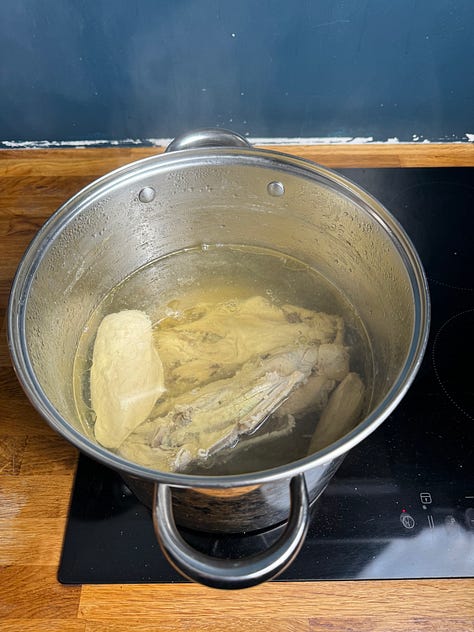
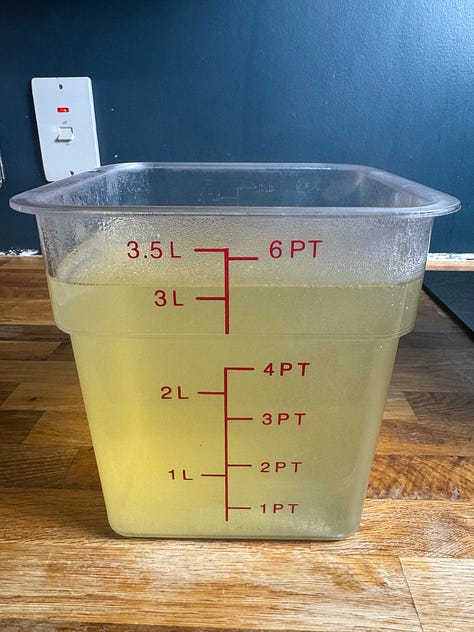
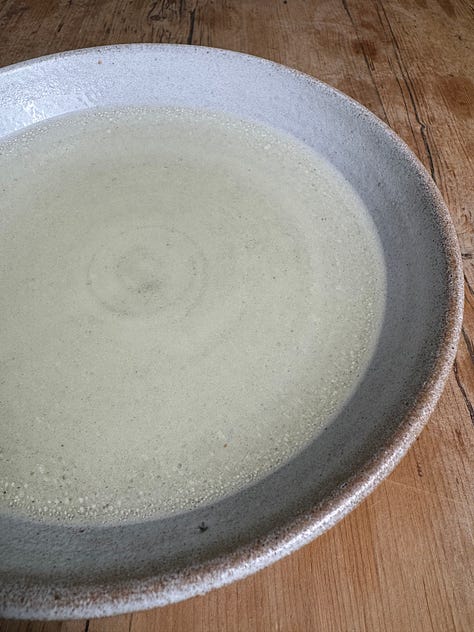
You could use any unsmoked ham that is cured in salt only and without spices. So Serrano, Bayonne, San Daniele, and Prosciutto all work. I go to a deli and get them to cut a big slab for me. That way its easier to remove the fat.






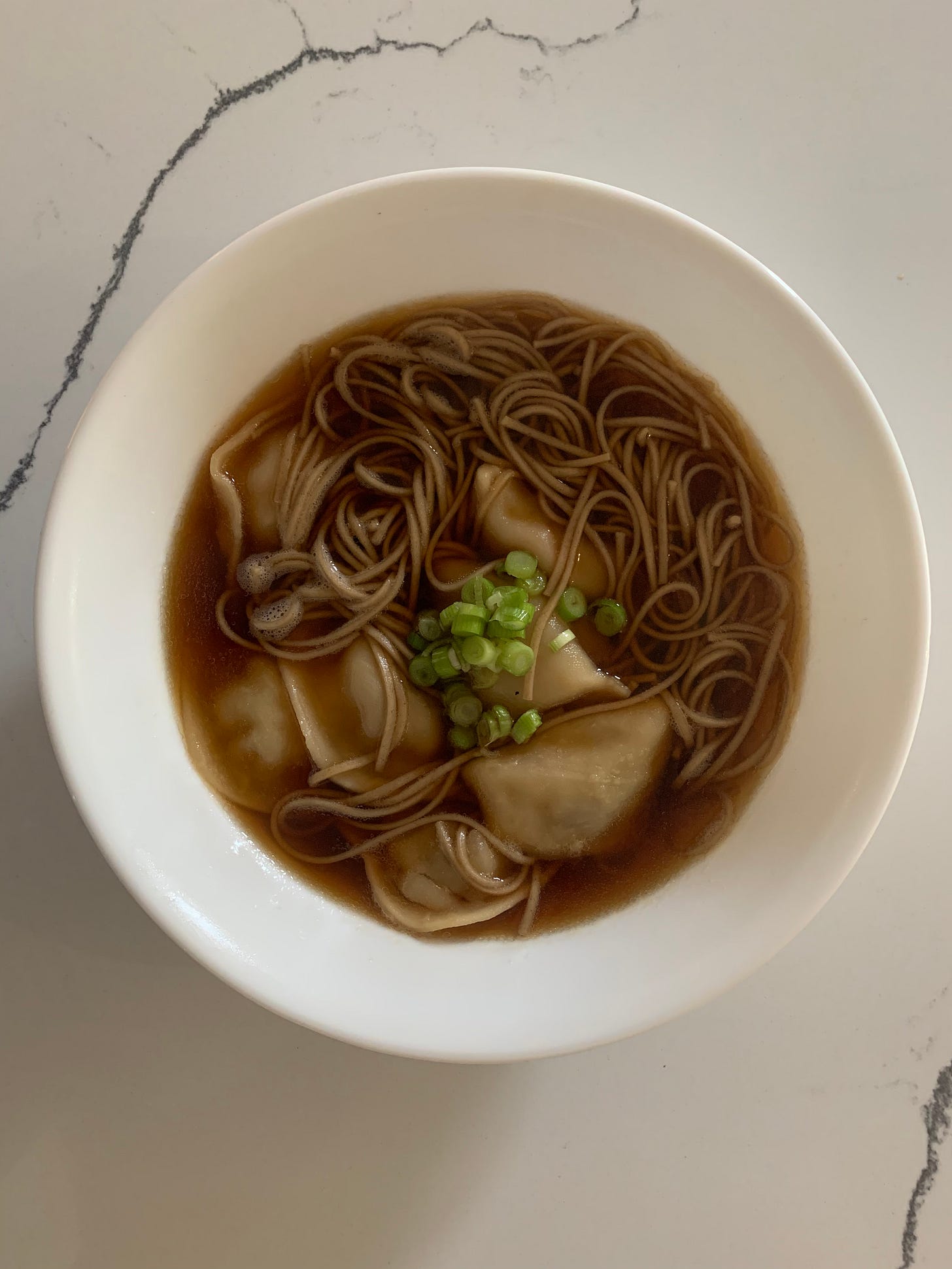
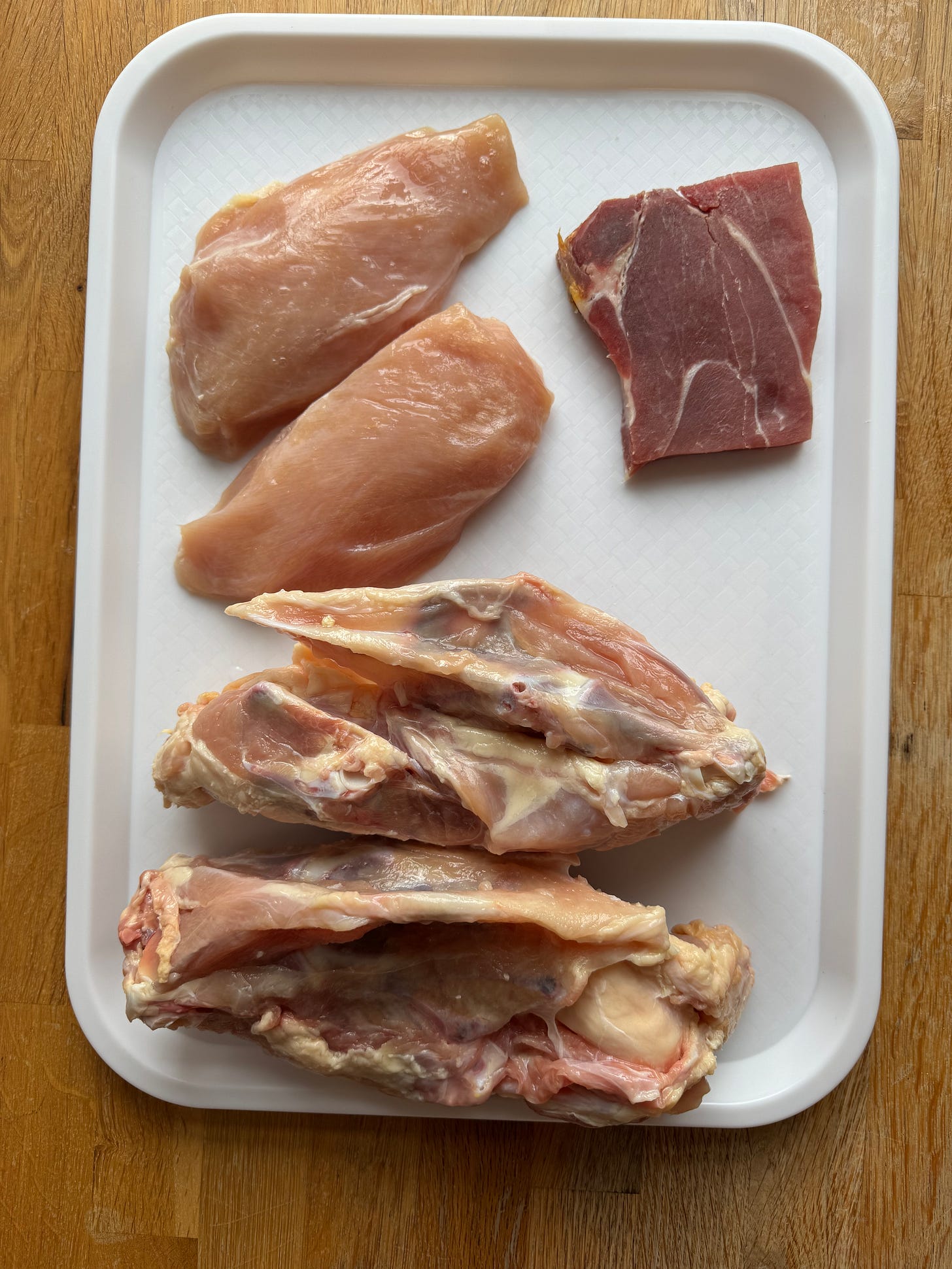
This sounds great, and not as complex as I expected.
Any suggestions of favourite ways to use the leftover cooked meat once your stock is strained? Thank you!